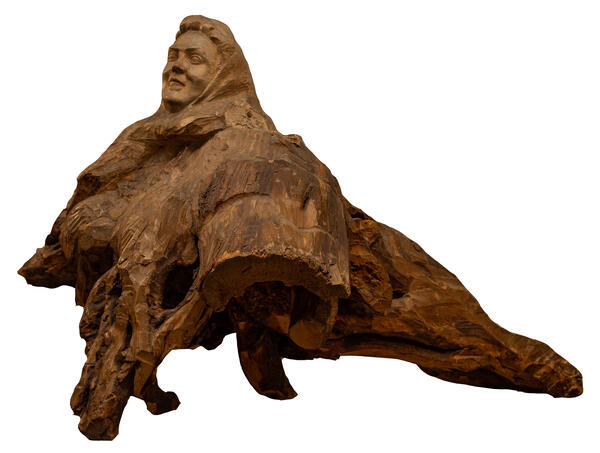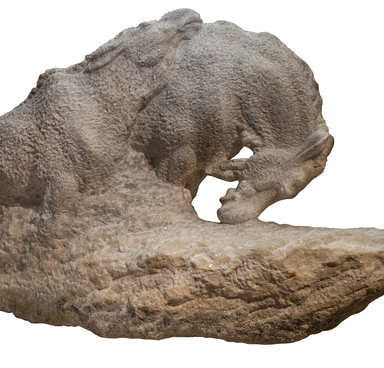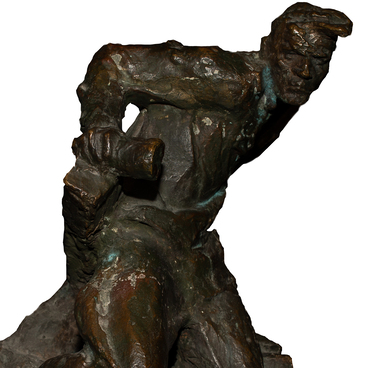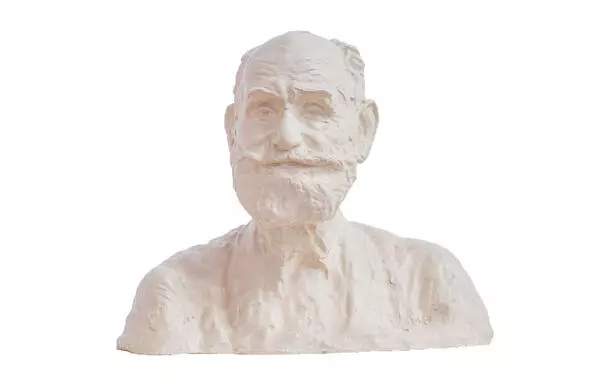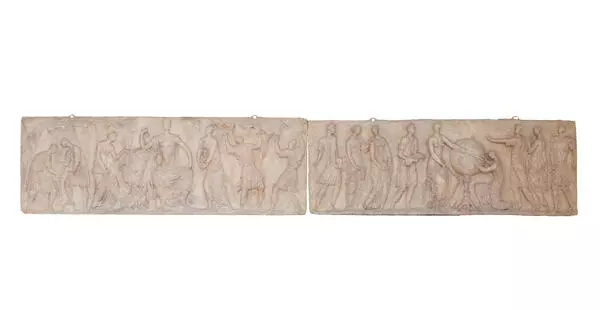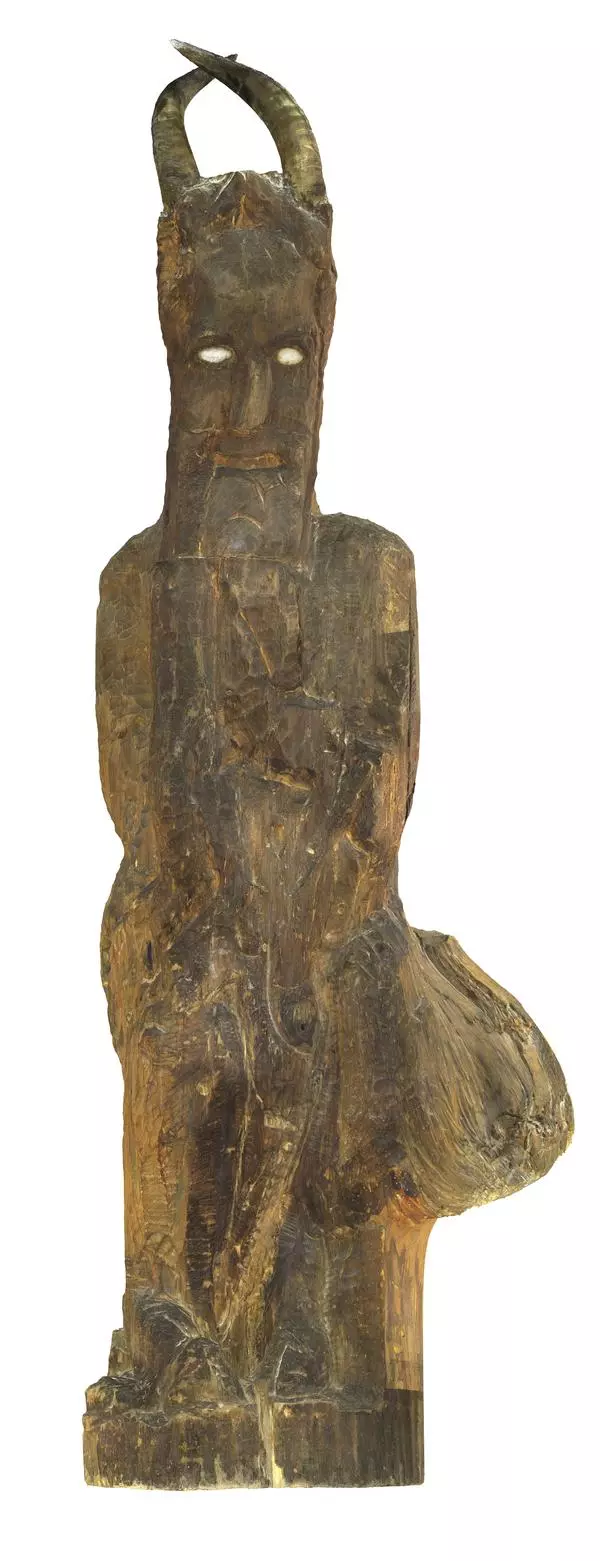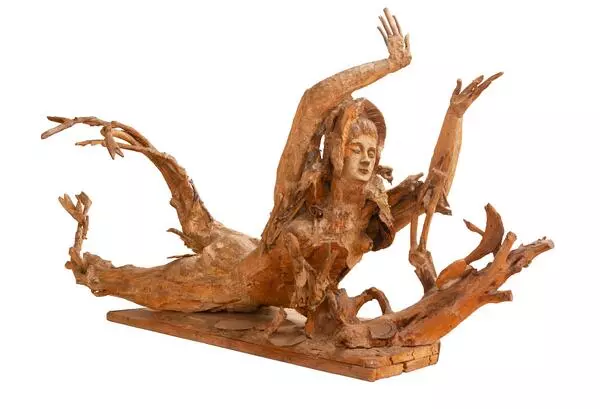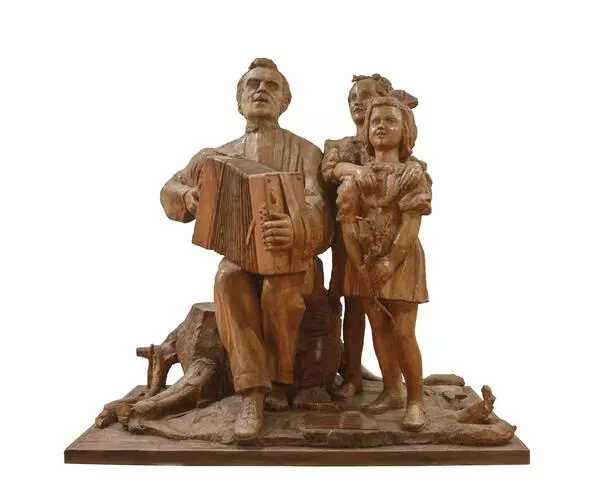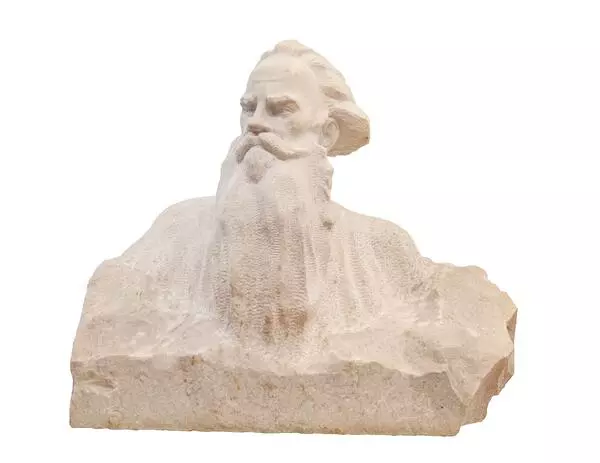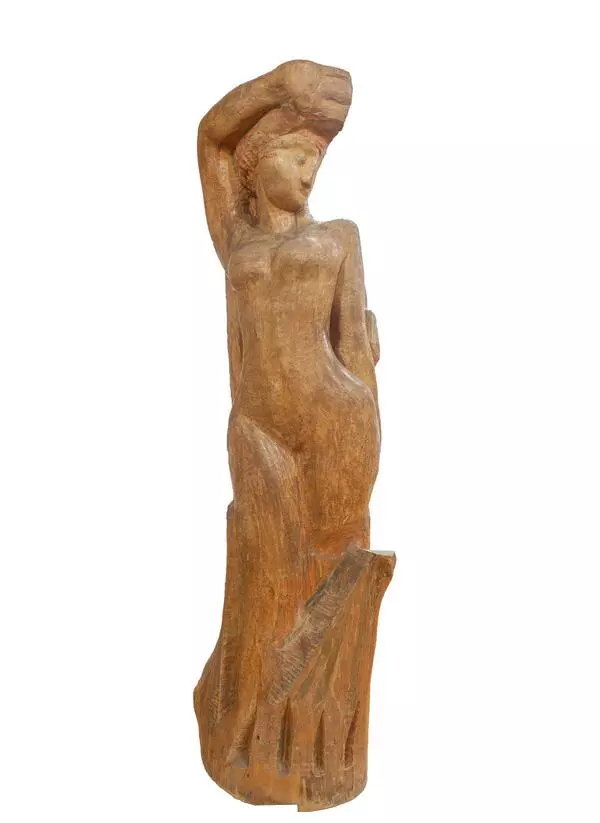Images of women played an important role in Soviet art. A new archetype was adopted soon after the foundation of the USSR with artists depicting women who were strong-willed, determined, energetic, healthy, and courageous. This image became especially relevant during the hard years after the Second World War when a lot of men had been killed, and women of all ages had to engage in physically strenuous work.
By the mid-1950s, Soviet citizens were sold the myth of a happy and prosperous Soviet Union, with its main character being a lively, cheerful and hard-working young woman.
Sergey Konenkov portrayed this archetype in his 1954 statue named ‘Kolkhoz Woman’. He created the statue after visiting his homeland — the Smolensk region — for the first time after the war. In this statue, the artist depicted a simple country woman Nastya Altukhova whom he mentioned in his diaries. The woman holds her head up and her chest rises as she breathes in deeply. She exudes boundless energy.
For this statue, the artist used wood — his favorite material which he had used masterfully since creating his Forest Cycle in the early 1910s. The extensive tree roots give a sense of a rapid whirlwind producing the renewed image of a Soviet woman.
The sculptor always skillfully used the best qualities of the natural materials he used. Experts recognized his ability to put spirit into each of his works. It is no wonder that Konenkov was often called ‘the Russian Rodin’. He was known far beyond Russia, having lived in the United States for over twenty years — between 1923 and 1945, which was the artist’s mature period.
Konenkov created numerous portraits of the great men of arts and science and was always able to capture the most essential qualities of their character. He created amazing psychological portraits of Fyodor Dostoyevsky, Ivan Pavlov, Sergei Rachmaninoff, Maxim Gorky, and other famous people. His 1935 sculpture of Albert Einstein is still believed to be one of the best images of the scientist.
By the mid-1950s, Soviet citizens were sold the myth of a happy and prosperous Soviet Union, with its main character being a lively, cheerful and hard-working young woman.
Sergey Konenkov portrayed this archetype in his 1954 statue named ‘Kolkhoz Woman’. He created the statue after visiting his homeland — the Smolensk region — for the first time after the war. In this statue, the artist depicted a simple country woman Nastya Altukhova whom he mentioned in his diaries. The woman holds her head up and her chest rises as she breathes in deeply. She exudes boundless energy.
For this statue, the artist used wood — his favorite material which he had used masterfully since creating his Forest Cycle in the early 1910s. The extensive tree roots give a sense of a rapid whirlwind producing the renewed image of a Soviet woman.
The sculptor always skillfully used the best qualities of the natural materials he used. Experts recognized his ability to put spirit into each of his works. It is no wonder that Konenkov was often called ‘the Russian Rodin’. He was known far beyond Russia, having lived in the United States for over twenty years — between 1923 and 1945, which was the artist’s mature period.
Konenkov created numerous portraits of the great men of arts and science and was always able to capture the most essential qualities of their character. He created amazing psychological portraits of Fyodor Dostoyevsky, Ivan Pavlov, Sergei Rachmaninoff, Maxim Gorky, and other famous people. His 1935 sculpture of Albert Einstein is still believed to be one of the best images of the scientist.

